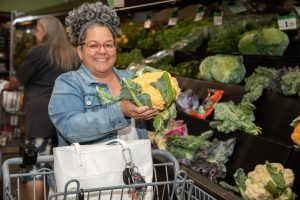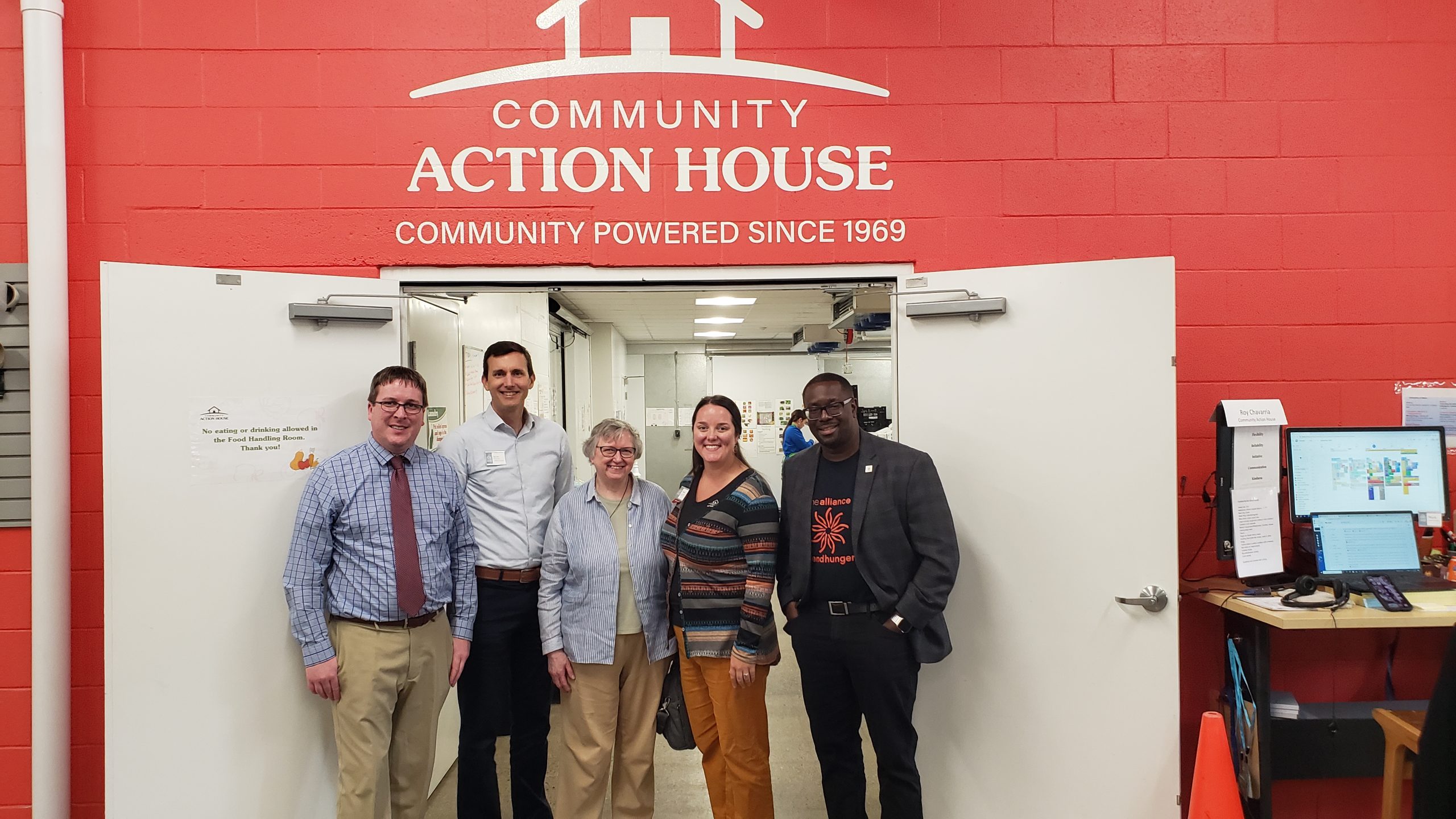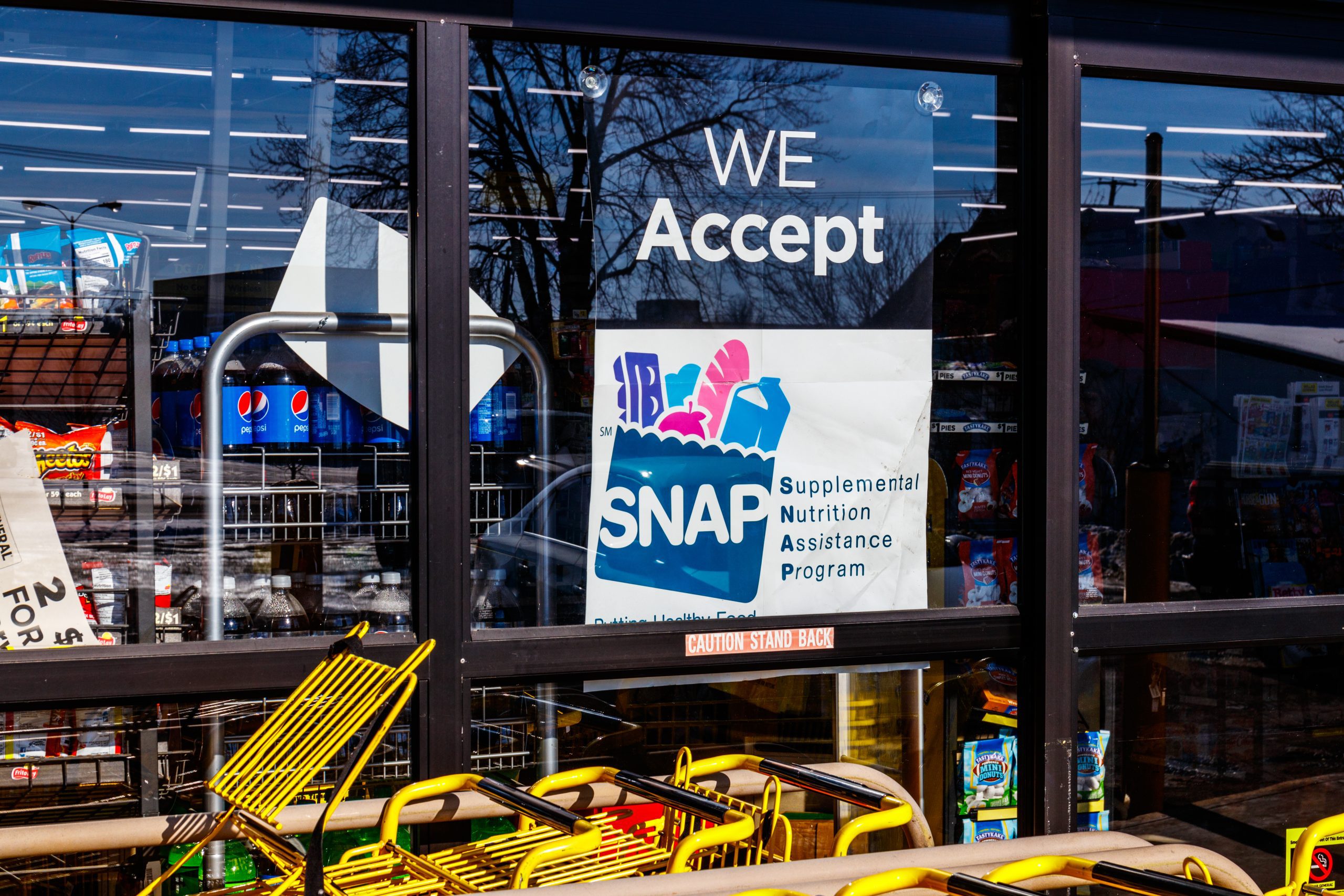Nathan Magrath | Alliance to End Hunger
When I entered Community Action House for the first time I was immediately struck by how welcoming, professional, and community-oriented everything was all at once. I was greeted by a receptionist at a front desk and shown to an area to wait for my colleagues – Alliance to End Hunger president Eric Mitchell and a fantastic supporter of both the Alliance and Community Action House, Carol Myers. Just sitting and waiting gave me a truly fascinating look into all that went into this organization. I could see a grocery store straight ahead of me, private consultation rooms for guests of Community Action House, a demonstration kitchen to my right, and even a room for child programs behind me.
Before we get into the particulars of Community Action House, we should take a quick look at the community in which it is situated. Ottawa County – where my own family currently lives – is one of the fastest-growing counties in Michigan. While traditionally very agriculture-heavy, the county is exploding with subdivisions and businesses as the influence of nearby Grand Rapids steadily grows. Holland, Michigan is located on the shore of Lake Michigan on the western edge of the county. Historically a legacy of Dutch immigrants, the small city is a popular tourist destination in West Michigan, especially during the spring Tulip Time Festival and the summer “beach weather” months. It is also home to Hope College, a well-known liberal arts college in the Midwest (and coincidentally my alma mater).
Holland and the rest of Ottawa County are also reflective of what so much of America is witnessing on a food security level. As wealth flows in, the tide does not always raise all boats. The community has ample examples of urban hunger, rural hunger, and migrant hunger. Hope College sits only a couple blocks from neighborhoods of families just trying to get by. In Ottawa County, 22,000+ individuals are food insecure, and limited affordable housing options means that families who are struggling have few options for making ends meet.
Community Action House has evolved and developed since its inception in the 1960’s to address the unique needs of the community and has grown to work across several key focus areas: dignified access to essential needs, connection and resource navigation, financial empowerment, and voice/dignity for their guests. On my visit I was particularly struck by the holistic approach of one of their newer programs, the “Food Club & Opportunity Hub.”
 The “Food Club” is an in-house grocery store that looks exactly like any other grocery store. There are departments for fresh produce, fresh and frozen meats, canned goods, breads, and more. Action House has adopted a very unique approach to help fill a common gap in communities. While traditional food access operations solve emergencies, few solutions exist to meet ongoing needs in a sustainable, dignified, and empowering way. In other communities, food is either free at a pantry or full price at the grocery store. At Food Club, guests invest a membership fee based on their household size and income, and in return they can select fresh produce, meat, dairy, and other food that works best for their family’s cultural and dietary needs. Last year, Food Club served 3,500+ families.
The “Food Club” is an in-house grocery store that looks exactly like any other grocery store. There are departments for fresh produce, fresh and frozen meats, canned goods, breads, and more. Action House has adopted a very unique approach to help fill a common gap in communities. While traditional food access operations solve emergencies, few solutions exist to meet ongoing needs in a sustainable, dignified, and empowering way. In other communities, food is either free at a pantry or full price at the grocery store. At Food Club, guests invest a membership fee based on their household size and income, and in return they can select fresh produce, meat, dairy, and other food that works best for their family’s cultural and dietary needs. Last year, Food Club served 3,500+ families.
The model blew me away. First and foremost, the Food Club gives members a level of dignity that is so desperately needed by those working hard to provide for their families. Folks can come in, get what they need without pressure on what they can or cannot receive, and leave after an ordinary checkout process. Through the intentionally adjacent “Opportunity Hub,” members also have access to critical resources – health and nutrition cooking classes, financial education, tax assistance, and a team that can provide connection to community resources offered by other agencies. Through their other programming – Financial Wellness, Street Outreach, a Community Kitchen, and more, their team is ready to meet guests facing any challenge, and walk alongside them to help build stability.
By the end of my visit I really came to know the organization as not just “for the community” but actually an integral part of it. As a true testament to this I heard one final story about Community Action House working with the local transportation department to ensure there was a bus route that stopped at the Food Club & Opportunity Hub, to lower barriers to food access for those who rely on public transportation.
Communities across the country have had their fair share of hardship over the past few years, and this community is no exception. However, I am proud to have Community Action House serving the neighbors in my community, and I look forward to seeing their work expand here and serve as a model for food access efforts in other communities.




